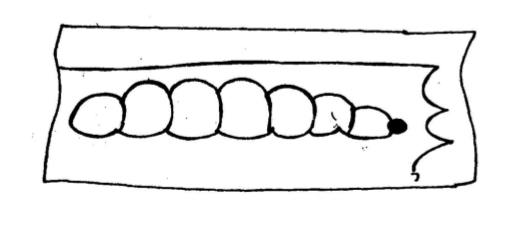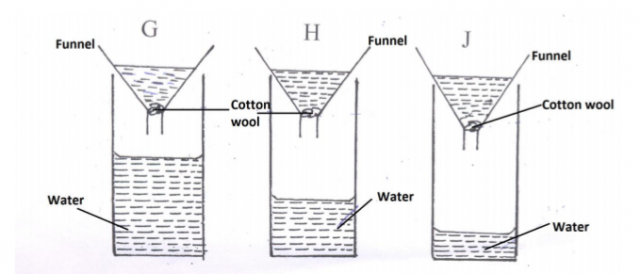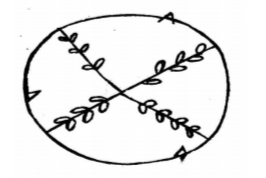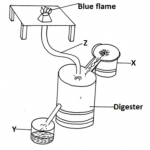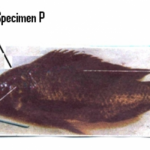KCSE Agriculture Paper 1 – 2014 EKSIKA Joint Evaluation Test
2014 EKSIKA Joint Evaluation Test
Agriculture Paper 1
SECTION A (30 Marks)
Answer all questions in this section.
List two aspects of light that influence agriculture.
1 marks
State two reasons why land settlement schemes were established in Kenya.
1 marks
Define the following terms as used in crop production.
(a) Pomology
(b) Olericulture
2 marks
Outline two methods used by farmers to harden – off seedlings in the nursery.
1 marks
State four circumstances that could make shifting cultivation practicable in an area.
1 marks
State two biotic factors that are useful in agricultural production.
1 marks
State four advantages of overhead irrigation.
2 marks
Give four signs that could enable you to identify a compost manure that is ready for use.
2 marks
State four agricultural services available to a crop farmer.
2 marks
State two factors that must be considered when constructing a cut-off drains.
1 marks
Give four methods of harvesting water in the farm.
2 marks
Give any two factors that should be considered before deciding to use chemical method of pest control.
1 marks
What is Biological Weed Control?
1 marks
State two farming practices that can be carried out to increase the amount of moisture harnessed by crops.
1 marks
Give two ways in which agriculture contributes to industrial development in Kenya.
1 marks
State any three characteristics of trees used in agro forestry.
1.5 marks
State what is meant by “trap crop” as used in crop pest control.
1 marks
Outline two factors that could determine the amount of fertilizer to be top dressed to a crop in the field.
1 marks
State two factors that determine the scale of agricultural production.
1 marks
State four benefits of budgeting to a farm manager.
2 marks
Give three reasons for practicing minimum tillage.
1.5 marks
SECTION B (20 Marks)
Answer all questions in this section.
The diagram below shows a maize stalk infested by a certain pest. Observe it and
answer the questions that follow.
(a) Identify the pest in the diagram above. (1mk)
(b) Give two damages caused by the pests identified in (a) above. (2mks)
(c) Other than maize name two other crops attacked by the pest (a) above.(1mk)
(d) Give two cultural measures for the pest (a) above. (1mk)
5 marks
Below is a diagram of a tomato plant.
(i) Identify the practice illustrated. (1mk)
(ii) Describe the procedure followed in spraying the crops with a fungicide in power form, water and a knapsack sprayer. (2mks)
(iii) Name one fungal disease that can be controlled in the crop using the procedure above. (1mk)
(iv) State two safety measures that should be taken while spraying the crops with fungicides. (2mks)
6 marks
The diagram below shows an experiment set up using soil types G , H and J.Observations were made after 24 hours. Study the diagram and answer the questions that follow.
(a) What is the experiment above designed to study. (1mk)
(b) Name the three soil type. (1 ½ mks)
G……………………………………………………………………………
H……………………………………………………………………………
J…………………………………………………………………………….
(c) Explain how the farmer can improve the soil type G. (1 ½ mks)
4 marks
The diagram below shows a method of bringing the tea into bearing. Study it carefully
and use it to answer the question that follow.
(a) Identify the method in the diagram above. (1mk)
(b) Why is it necessary to prune a young tea plant as illustrated in the diagram above. (1mk)
(c) Outline the procedure followed when using the pruning method shown above.(3mks)
5 marks
SECTION C (40 Marks)
Answer only two questions in this section.
(a) Explain five factors that influence soil productivity. (10mks)
(b) Outline five factors that a farmer would consider before deciding on the type of irrigation in crop production. (5mks)
(c) Describe the qualities of the mother plant that should be considered when selecting vegetative material for planting. (5mks)
20 marks
(a) Explain cultural measures used in the control of weeds in a field of cereal crop. (10mks)
(b) Explain six factors that can influence a well designed crop rotational program. (6mks)
(c) Give four reasons why timely ploughing of the seedbed is important in crop production. (4mks)
20 marks
(a) A farmer has 30 hectares of arable land,20 hectares of which is planted with maize and 10hectares with grass hay. He wishes to replace 10hectares of maize with Irish potatoes next year. The fertilizer rate will have to be increased from 2 bags per hectare for maize to 4 bags per hectare for potatoes.
As a result of the change extra 40 men days of actual labour per hectare will be necessary at the rate of Kshs.100 per man a day. The average yield per hectare of maize is 35bags and for potatoes 120bags.The price paid is Kshs.1, 000 per bag of maize and Kshs.600 per bag of potatoes. Maize seeds cost Kshs.750 per hectare and potatoes cost Kshs.800 per hectare. Fertilizer costs
are 650 per hectare.
Draw up a partial budget and advice the farmer accordingly. (10mks)
(b) Discuss maize production under the following sub-headings
(i) Ecological conditions. (3mks)
(ii) Field preparation. (3mks)
(iii) Planting and field management. (4mks)
20 marks
